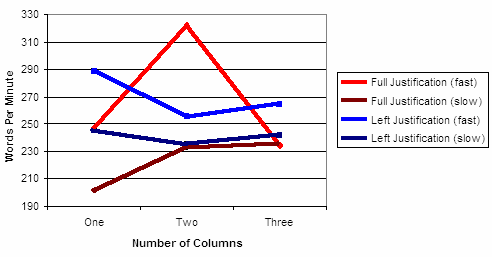- 28 Posts
- 10 Comments

 1·3 months ago
1·3 months agoThe thread is about the psychology of acceptance of collective punishment. Nit-picking 1 of the 6 examples serves what purpose, exactly?
A punishment may or may not be in connection to a “crime”. Crime is a man-made artificial construct. When we speak of collective punishment, the punishment is applied more broadly than those doing the harm (which may more may not be a 1-to-1 mapping to “crime”, or there may even be no crime to speak of).
To answer the question, you have misunderstood the research (which came from CATO Institute). The research does not count being undocumented as a crime for the study. In fact, I should have mentioned it neglects all non-serious crimes (traffic infringements, minor theft, possession of small quantities of pot, etc). The study puts the bar at incarceration. If a crime leads to incarceration, then it is a serious crime, which is ideal for the study. Of course counting illegal immigration in that study would defeat the purpose of the study and just serve the propaganda interests of the right-wing nationalists.
It is also wrong to define all undocumented people as criminals because (for example) asylum is a legal process entitled to asylum seekers who are undocumented. The same group of advocates for collective punishment also endorse the process of converting legal immigrants into illegal immigrants by arbitrarily denying them an extension of their permit after they have been rooted in for decades (formed families, integrated into local culture, contributed to the economy, etc), uprooting them from where they were lawfully established and giving them the boot without even covering travel expenses. The unlawfullness of their status was /created/ by the pushers of collective punishment in this case. The collective punishment was a pre-cursor to this technical “crime”.
Anyway, your false claim that undocumented inherently implies crime needed correction but beyond that the discussion is irrelevent to the thesis.
 2·3 months ago
2·3 months agoThat wouldn’t exactly hit the mark because a ghost community /can/ be active. The problem is that if you have:
- someCommunity@originalNode
- nodeA/someCommunity@originalNode
- nodeB/someCommunity@originalNode
You can see the local copy of nodeA/someCommunity@originalNode if you are on nodeA. But you don’t know it is orphaned and you are in a bubble. People on nodeB can see posts in nodeB/someCommunity@originalNode, but not nodeA/someCommunity@originalNode. There is no signal that you have been cut off, and that your post will only have a local audience.
We already have transparency of activity, but not transparency of scope and reach.
I would even say adding the transparency is just a start. The real bug here is that the fedi has not figured out that nodeA and nodeB need to sync with each other regardless of the parent.

 1·3 months ago
1·3 months agoNot AFAIK. We would be inventing it. From there, it’d be a tool for legal actions and leverage.

 411·3 months ago
411·3 months agoEV car buyers have a delusion that their old ICE car is removed from the planet. ICE cars are not being trashed upon replacement. They are shipped to Africa, where the avg. age of a car at the time of purchase is 21 years old.
Small aircrafts w/an ICE last forever because they are very well maintained (by law in fact). The cost of replacing an aircraft is also very high, so economic pressure also ensures a long life. The same would be true of ICE cars in your region if the economics of your region demanded it. Reguardless, unless you also plan to eliminate worldwide poverty in a couple decades, the ICE cars are not going away.
What if I can hear wi fi? How could I tell?
Wouldn’t it be bothering you if you could?
Well, I suppose not necessarily… I hear a hum but it does not bother me because I don’t generally fixate on it. When I notice it, I then realise I’m being lazy and need to get out of bed and get my attention on something. Some people suffer, like Diane Schou, who moved to a town that didn’t trigger her electromagnetic hypersensitivity.
I suppose a test would be to enter a sound-proof room which then also has a faraday cage, and get tested. The tester would have controls for emitting sounds mostly outside the statistical hearing range, along with one to turn on a wifi AP, and some dummy switches that emit nothing. Then for you to raise your hand when you hear something. I read about someone taking a test like that, and she raised her hand whenever some electronmagnetic something was played (wi-fi iirc). It was something that was unusual and surprised the researchers. I cannot find the story on that now. Might have appeared in Wired mag… not sure.

 01·5 months ago
01·5 months agoI highly doubt that gas stove is more efficient that anything other than a wood fire.
We’re talking from energy source to water, not wall to water. Sure, if you neglect everything that gets the energy to your wall, then electric is more efficient.
What do you mean you have to watch the temp control? Obviously they shut off at the temp you set
There are 3 varieties of electric kettles:
- on/off, no control
- temp guage (analog or digital), no setting
- configurable so you can set the temp which is then targetted
BTW, your link is unreachable to me. (Cloudflare strikes again)

 01·5 months ago
01·5 months agoGas has a conversion efficiency of 100% but not all of it every the kettle. That leads to efficiencies lower than the electric ones.
Yes but you’re only talking wall to water. From energy source to water gas is the most efficient because it does not have the lossiness of generation and transmission that electric does.
With good induction it is also faster than every other method so that would be my choice if I had an induction cooker.
You’re purely talking boil times. But the end game is brewed tea, in which case it cannot be faster because after boiling the water you still need ~1—3 min to brew it. That’s why the inline heating elements in dispensors are interesting. It starts brewing immediately so the 1m50s it takes to boil all the water can be neglected.

 0·1 year ago
0·1 year agoThey could try to say that but I doubt people would believe it.
Who throws away their own code particularly when it’s not junky commercial code but code their heart and soul was behind on a non-profit project? I keep my old code around if anything just to be able to search it to re-teach myself coding and design tips I forgot about. This code backs their research which they may need to refer to when a prospective employer asks for detail on how they executed the study.









I did, but I may be wrong. Wikipedia says tea trees are used.